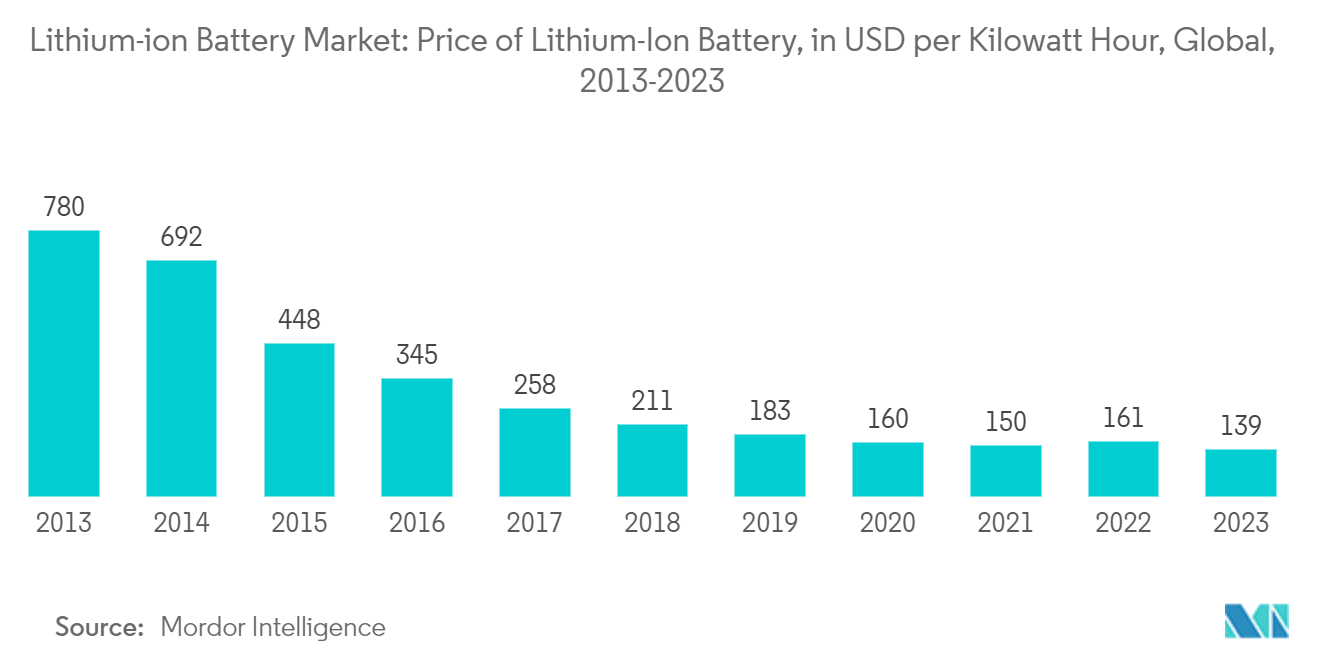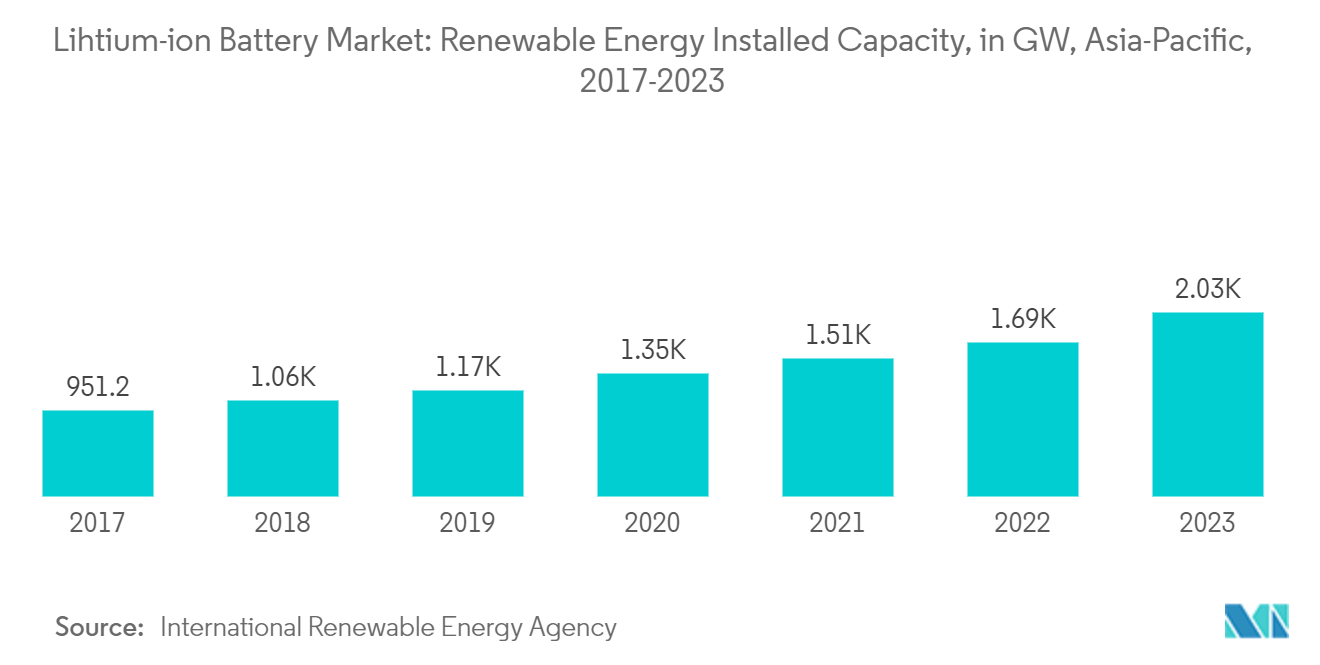Market Trends of Lithium-ion Battery Industry
The Automobile Segment Expected to Dominate the Market
- n the early years of the lithium-ion battery industry, the consumer electronics sector was the major consumer of batteries. However, in recent years, electric vehicle (EV) manufacturers have become the biggest consumers of lithium-ion batteries, owing to the growing sales of EVs.
- EVs do not emit CO2, NOX, or any other greenhouse gases and, hence, have a lower environmental impact than conventional internal combustion engine (ICE) vehicles. Due to this advantage, many countries are encouraging the use of EVs by introducing subsidies and government programs.
- Several countries have announced plans to ban the sales of ICE vehicles in the future. Norway announced plans to ban the sales of ICE vehicles by 2025, France by 2040, and the United Kingdom by 2050. India also has plans to phase out ICE engines by 2030, while China's similar plan is under the relevant research phase.
- Moreover, the decline in lithium-ion battery prices will affect the battery market. In 2023, the lithium-ion battery price was noted to be around USD 139 per kWh, a decrease of around 82.17% from 2013. The plummeting cost of batteries would benefit the automotive segment and propel the growth of the lithium-ion battery market worldwide in the long term.
- Therefore, owing to the above factors, the automobile segment is expected to dominate the market during the forecast period.

Asia-Pacific to Dominate the Market
- With the increasing deployment of renewable energy projects and electric vehicles in countries such as China and India and the high demand for electronics with urbanization and increasing power purchase parity, lithium-ion batteries are expected to witness significant growth in the region.
- A significant fraction of Asia-Pacific's population is estimated to live without electricity access. It depends on conventional fuels, such as kerosene and diesel, for lighting and mobile phone charging. Due to its technical benefits and declining lithium-ion battery prices, lithium-ion battery integrated energy storage solutions are likely to witness an increasing adoption rate. This, in turn, is expected to create significant opportunities for lithium battery manufacturers in the future.
- China is one of the largest markets for electric vehicles, and the country's increasing adoption of electric vehicles has been in line with its clean energy policy. Moreover, the Government of China has been providing financial and non-financial incentives to promote the adoption of electric vehicles.
- India is one of the fastest-growing countries globally for lithium-ion batteries. To counter the manufacturing issue, the National Institution for Transforming India (NITI) Aayog rolled out proposals in February 2020 to provide subsidies for investors setting up giga-scale lithium-ion manufacturing facilities in India. Between 2020 and 2030, the NITI Aayog will likely invite bids to establish production lines with 50 GWh of annual output capacity. Therefore, the indigenous manufacturing of lithium-ion batteries is expected to grow during the forecast period.
- Under the Paris Climate Agreement, India has pledged to have 40% of its electricity generation capacity sourced from non-fossil fuels by 2030. To meet this objective, the nation aimed to establish 175,000 MW of renewable energy capacity, which includes 100,000 MW of solar power, by 2022. A target of 450,000 MW of installed renewable energy capacity by 2030 has been set. To achieve the target, India presents a vast market for energy storage solutions to address the intermittency of renewable energy sources and enhance grid stability.
- According to the International Renewable Energy Agency (IRENA), the installed capacity of clean energy sources in the region in 2023 stood at 2,025 GW, an increase from the previous year's 1,691.77 GW.
- Therefore, owing to the above factors, Asia-Pacific is expected to dominate the lithium-ion battery market during the forecast period.


